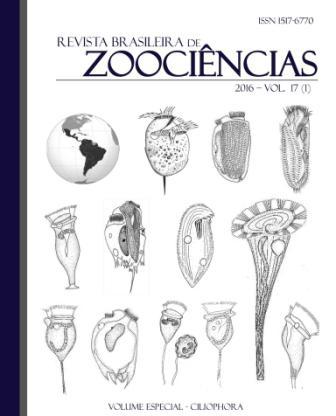Effects of fire stress to soil protozoan abundance and richness in a Brazilian savanna
Resumo
Protozoans are important components of the aquatic and terrestrial food webs. Since they are voracious bacterial predators in terrestrial habitats, they can consequently affect soil fertility. Considering that fire is a common and frequent event in agricultural and natural soils, especially in cerrado areas, this work aimed evaluating the effects of fire on protozoan communities occurring in a soil with cerrado vegetation. It was conducted 16 samplings (from august/2011 to august/2012) at a location exposed to a fire event (Burned) and one not exposed (Control). The “Non-Flooded Petri Dish” technique used to evaluate the protozoan cryptic diversity of the samples. Qualitative and quantitative analyses of the active soil protozoans were also done. It was used the Canonic Correspondence analysis (CCA), Jaccard indexes, the Bray-Curtis similarity coefficient, Shannon indexes and Kruskal-Wallis test for data analysis. It was found 102 morphospecies, distributed into 12 protozoan taxonomical groups. From the total, only 32 morphospecies, distributed into 9 taxonomical groups, were active. The CCA evidenced that the significant variables by the Monte Carlo test, that showed association with the biological data were: mean air temperature, mean relative humidity of the air, coarse sand, medium sand, fine sand and clay. The Jaccard index and Bray-Curtis test showed that the Control (C) and Burned (Q) areas are similar. The value chosen to delimit the clusters were respectively 0,25 and 0,60. The Shannon index gave the same results for the two areas. This index and the BrayCurtis test consider both richness and abundance, but the Jaccard index considers only richness. The KruskalWallis test showed a significant difference between the two areas in only 2 samplings. With the other 14 sampling there was no difference. Protozoan densities did not change at the first three weeks from the fire event, then, the populations starts to reduce. Subsequently, three months after the fire, at more favorable conditions, the protozoan populations increased again. After this phase, three and a half months after the fire, protozoan densities reduced and the densities stayed similar in both regions. The fire did not caused changes in the protozoan community structure, but only caused density reduction. Probably the fire did not affect directly this community, but indirectly, intensifying soil drought. We concluded that these protozoan populations are adapted to the effects of fire.



